
Here’s a thread about the fundamental constituents of the universe, as explained by @nattyover, with graphics by Samuel Velasco and @LucyIkkanda.
In the 1970s, physicists formed a framework that encapsulates our best understanding of nature’s fundamental order. Yet most visualizations of the Standard Model of particle physics are too simple, ignore important interconnections or are overwhelming.
The most common visualization of the Standard Model shows a periodic table of particles, but doesn’t offer insight into the relationships between them. It also leaves out key properties like “color.” 
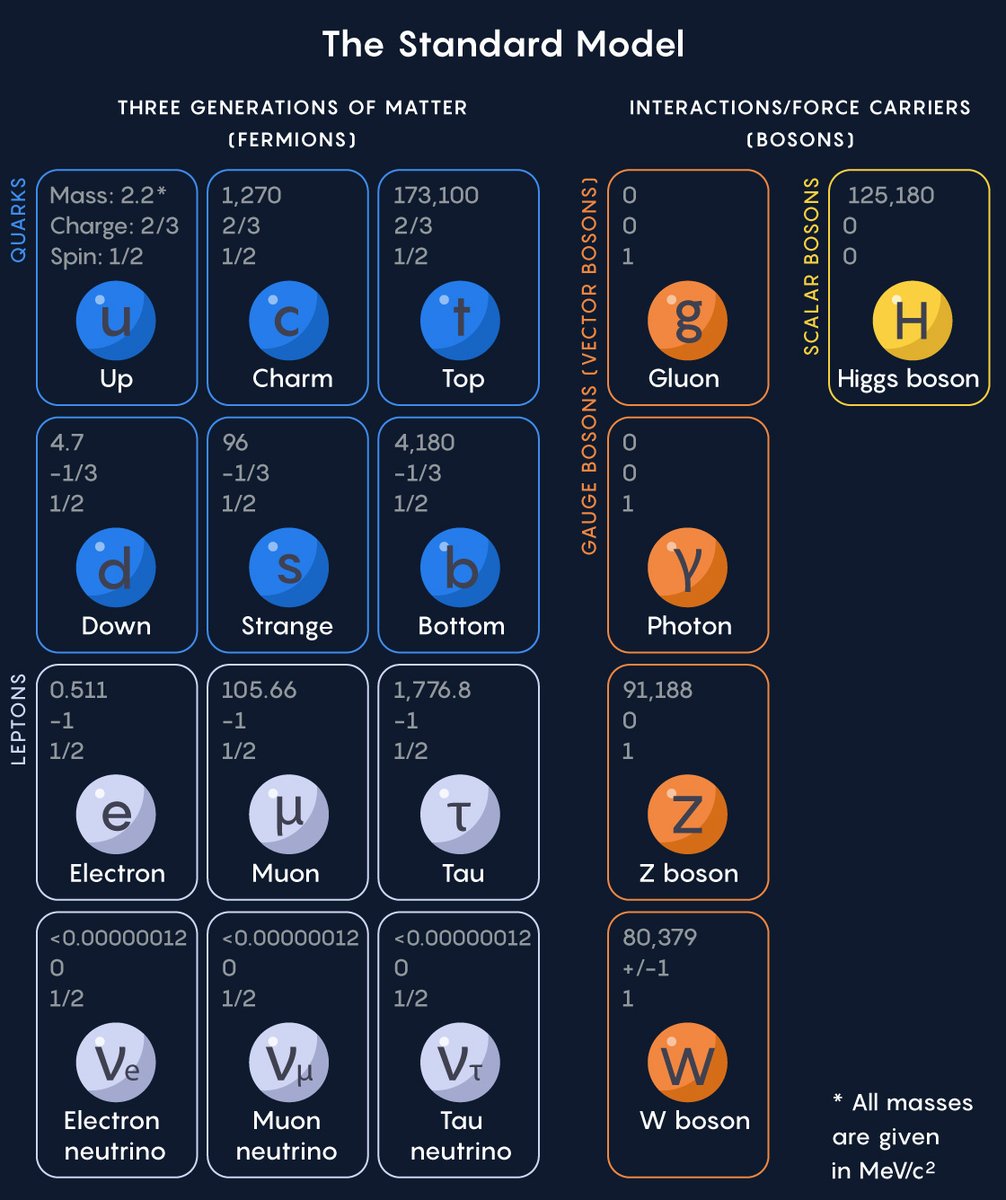
A visualization of the Standard Model created for the 2013 film “Particle Fever” emphasizes the Higgs boson, but places it beside the photon and gluon, particles unaffected by the Higgs. 
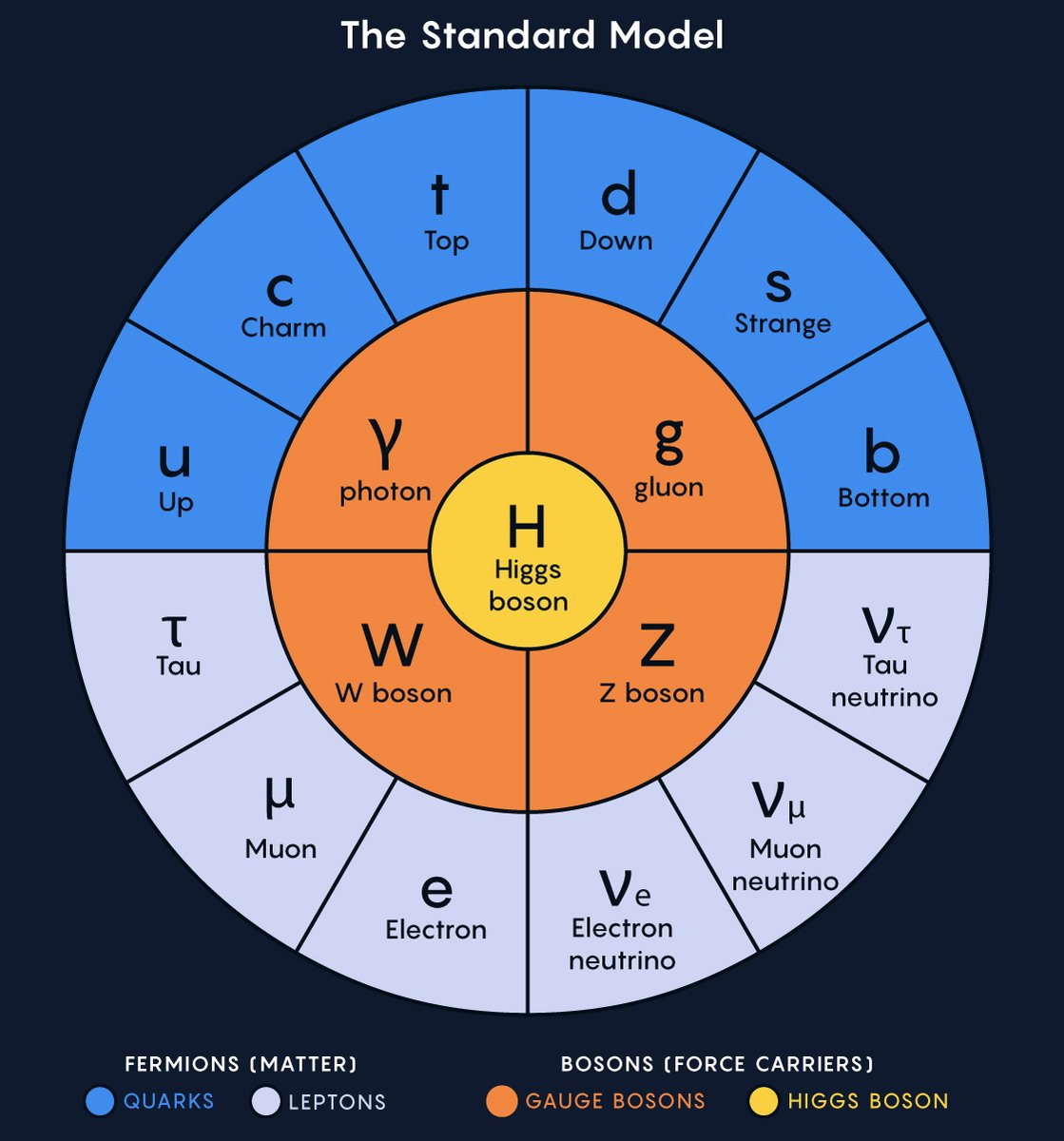
In the first part of a four-part series on the hidden structure of the universe, Quanta has developed a new interactive map of the Standard Model of particle physics based on the “double simplex” representation developed by @Fermilab physicist @chrisquigg.
Matter comes in two main varieties: quarks and leptons. Two types of quarks form the protons and neutrons inside atomic nuclei: up quarks, each of which carries two-thirds of a unit of electric charge, and the down quark, with an electric charge of –1/3. 

Up and down quarks can be either “left-handed” or “right-handed” depending on whether they are spinning clockwise or counterclockwise with respect to their direction of motion. 
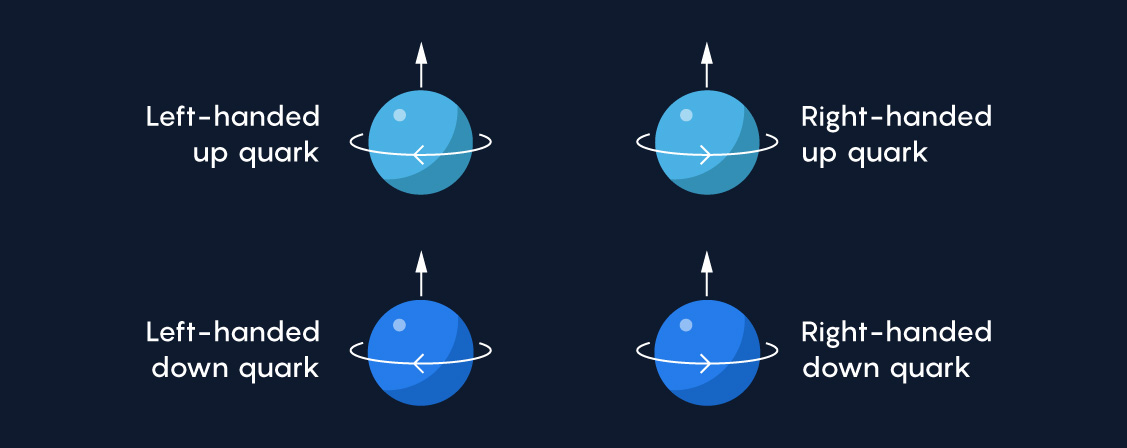
The weak force allows left-handed up and down quarks to transform into each other when they exchange a particle called a W boson. Right-handed quarks can’t do this due to a lack of right-handed W bosons in nature. 



Quarks also have a kind of charge called color. A quark’s color (red, green or blue) makes it sensitive to the strong force. The strong force binds quarks of different colors into colorless composite particles such as protons and neutrons. 
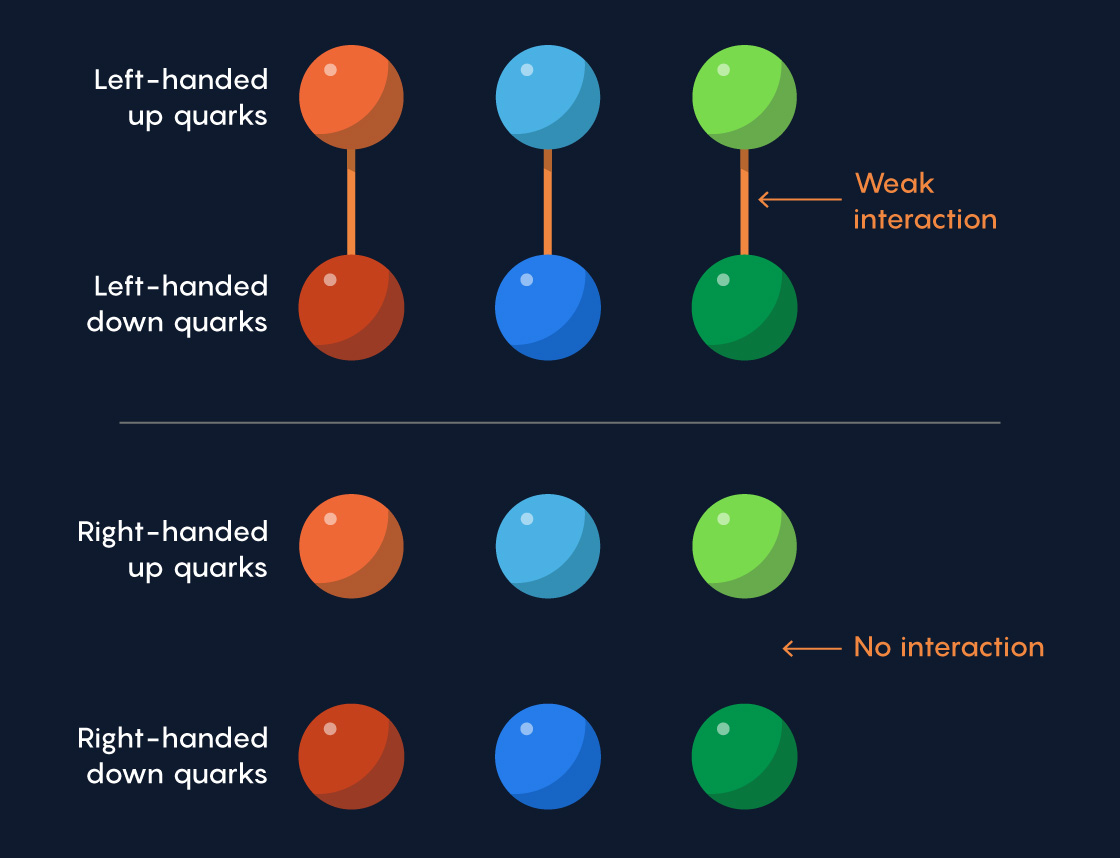
Quarks transform from one color to another by absorbing or emitting particles called gluons, the carriers of the strong force. These interactions form the sides of a triangle.
Because gluons possess color charge themselves, they constantly interact with one another as well as with quarks. The interactions between gluons fill the triangle in. 
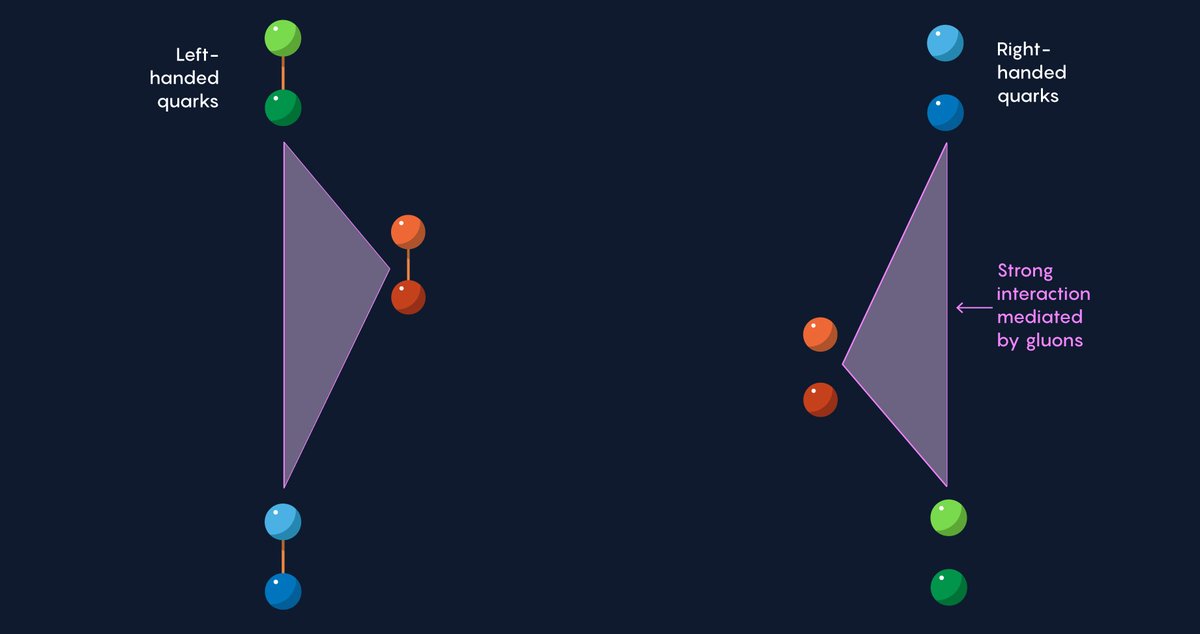
Leptons, the other kind of matter particles in addition to quarks, come in two types: electrons, which have an electric charge of −1, and neutrinos, which are neutral. 

Like left-handed up and down quarks, left-handed electrons and neutrinos can transform into each other via the weak interaction. However, right-handed neutrinos have not been seen in nature. Leptons don’t possess color charge or interact via the strong force. 
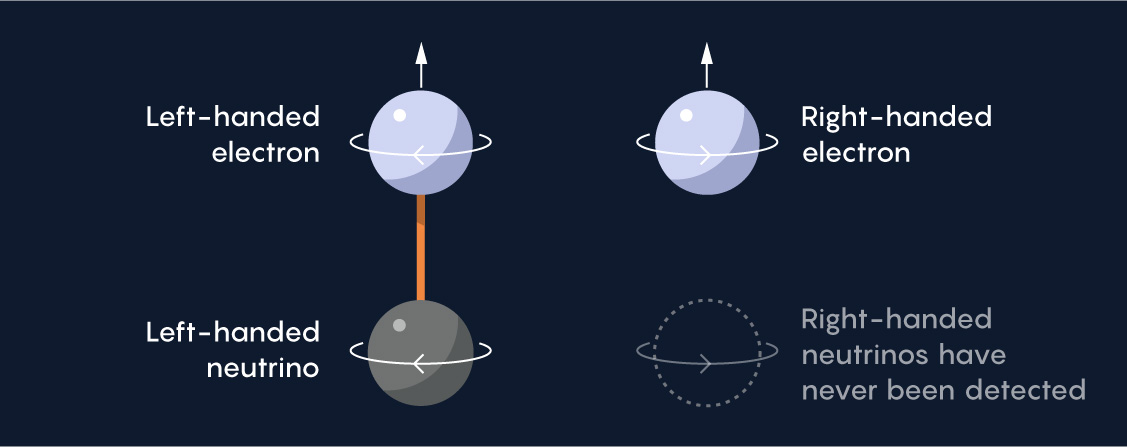
The left-handed particles on the left and right-handed particles on the right come together to form the basic skeleton of @chrisquigg’s double simplex. 
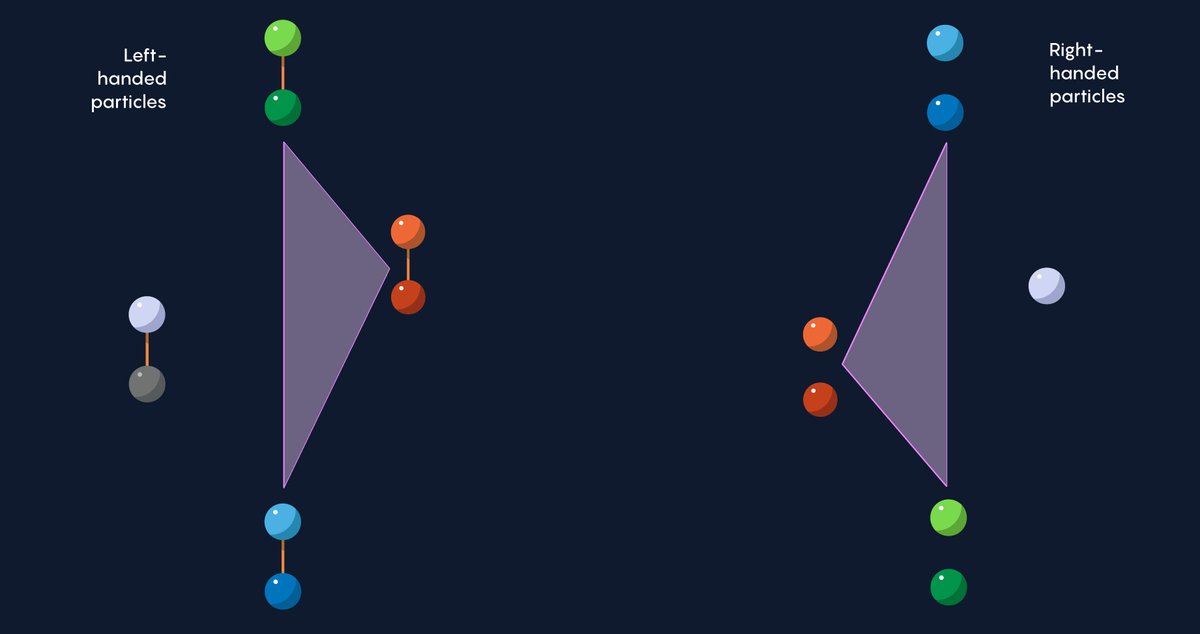
Three progressively heavier but otherwise identical generations of each type of matter particle exist. (Note that neutrinos have small but unknown masses.) 
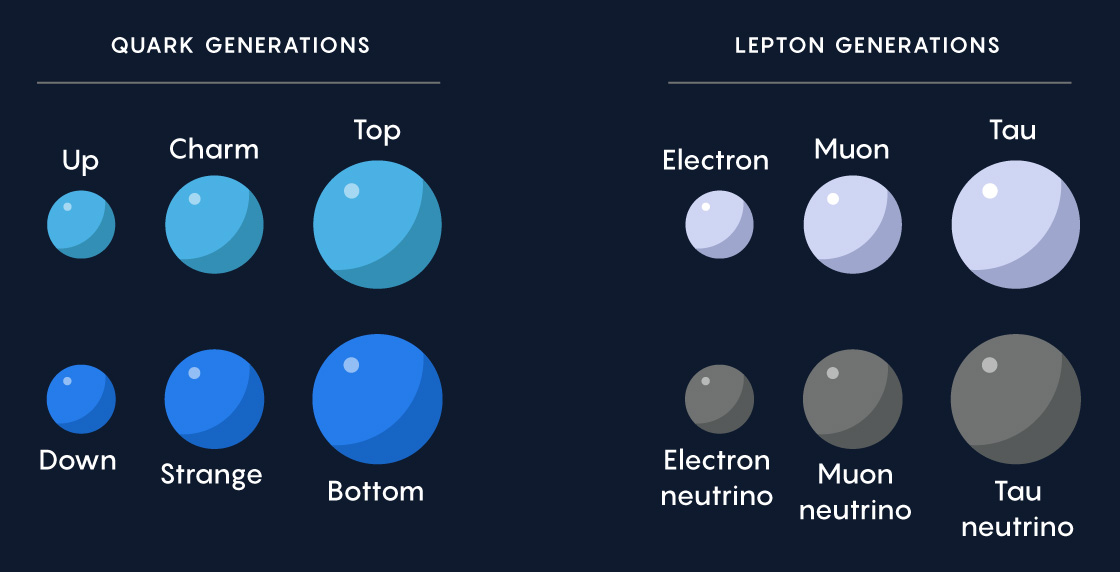
A small amount of weak interaction happens between left-handed quarks in different generations; an up quark could occasionally spit out a W+ boson and become a strange quark, for example. Leptons have not been observed interacting in this manner. 
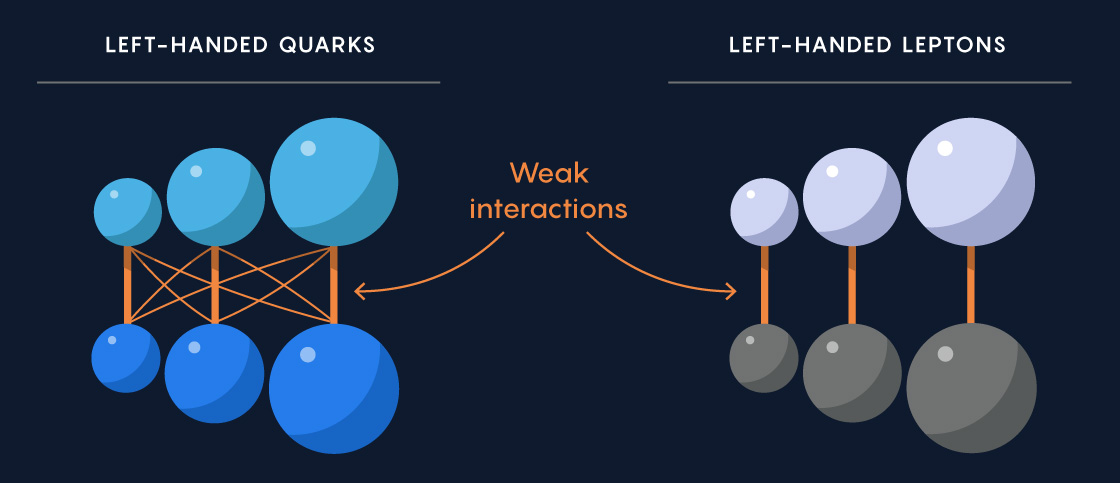
All particles except neutrinos are also sensitive to the electromagnetic force and interact with one another by exchanging photons, which carry that force. In the double simplex, we represent electromagnetic interactions as white wavy lines. 
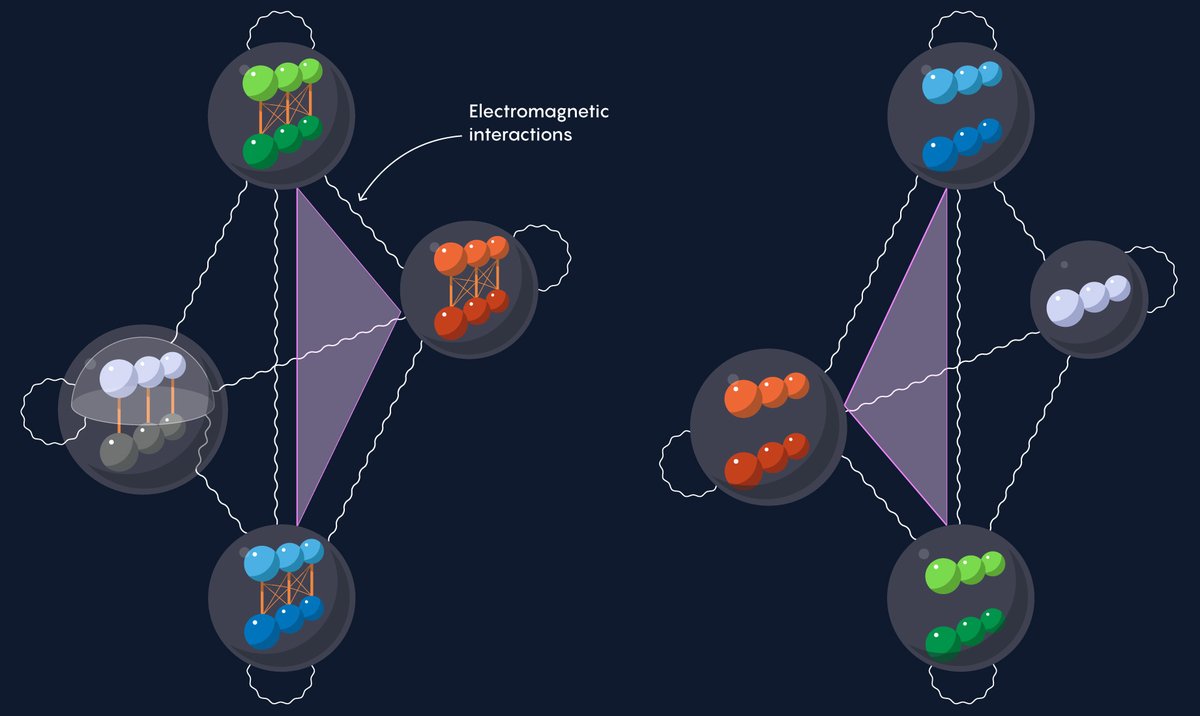
In addition to W+ and W– bosons, there is another carrier of the weak force — a neutral carrier called the Z⁰ boson. Particles can absorb or emit Z⁰ bosons without changing identities. “Weak neutral interactions” are represented here by orange wavy lines. 
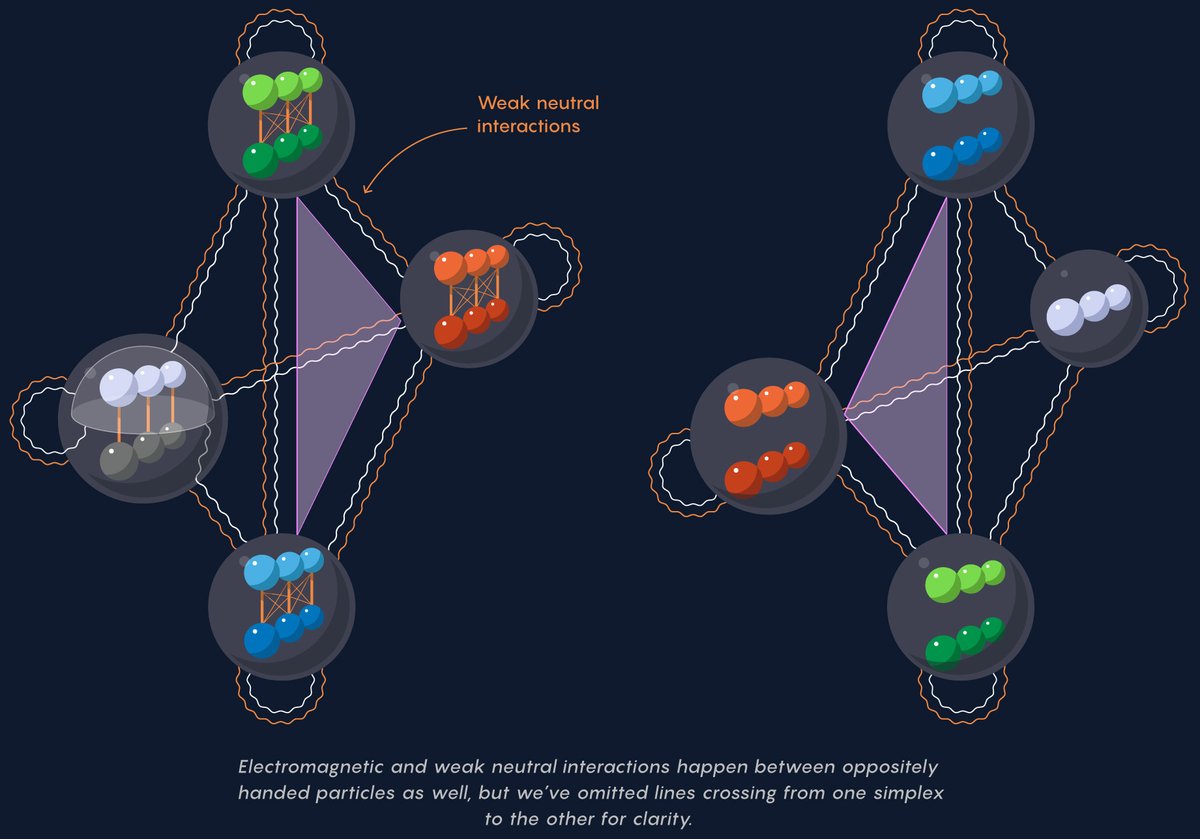
Finally, Higgs bosons — excitations of the universe’s Higgs field — bump into electrons, slowing them down and giving them mass. In general, the more a particle interacts with the Higgs boson, the more mass it has. And with that, we have the Standard Model of particle physics: 
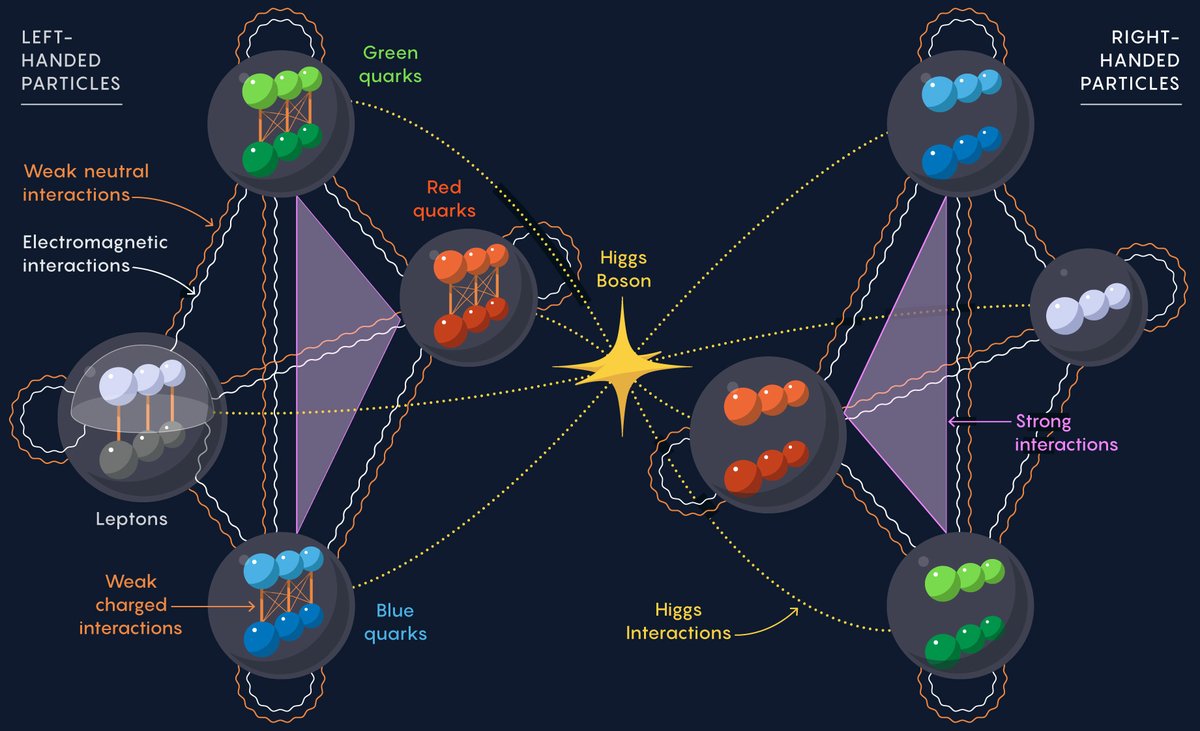
Head to QuantaMagazine.org to explore our visualization of the Standard Model in 3D with full annotations. quantamagazine.org/a-new-map-of-t…
The second chapter of our Hidden Structure physics series will be published tomorrow. (/Thread)
quantamagazine.org/the-hidden-str…
quantamagazine.org/the-hidden-str…
• • •
Missing some Tweet in this thread? You can try to
force a refresh






